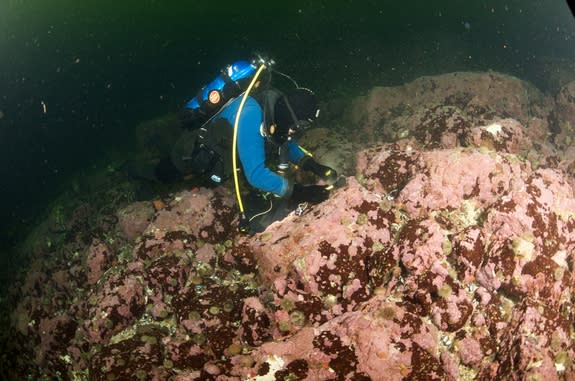 Science and Weather
Science and WeatherArctic algae expand records of sea ice changes by over 600 years

Arctic sea ice has been disappearing at an alarming rate over the past 30 years or so, but scientists studying the trends have been limited by just how far back our records go. Now, thanks to a species of Arctic algae, more than 600 years have been added to those records, and they show that this rapid decline of sea ice has actually been happening for over 150 years.
Our current records of Arctic sea ice extent go back to 1979, when NASA's Seasat and Nimbus 7 satellites started collecting data. Since then, the amount of sea ice observed in the Arctic Ocean hasn't been steadily decreasing, year by year, simply because weather and climate change don't work like that. However, taken decade by decade, the records have shown a steady decrease. The total extent of sea ice seen in the '90s was generally smaller than the extents seen in the '80s, and the extents seen since 2000 are alarmingly smaller than they were in both the '80s and the '90s. Still, with only a little over 30 years worth of data to work from, figuring out long-term trends is still hard to do.
The solution to this 'data gap' has now been found, though, in the hard, calcite crust of coralline algae, which grows on the sea floor of the Arctic Ocean. Just like a tree forming rings as it grows and those rings acting like a record of what the climate was like while the tree lived, for each year the coralline algae lives, it adds another layer of calcite to this crust, and these layers show the conditions of the environment. The more open water there was in the Arctic, and thus more sunlight reaching the algae, the thicker the layers grow and the more magnesium a layer holds. By using radiocarbon dating on the numerous samples they collected, they were able to tell how old each layer was, and construct a detailed timeline of climatic changes in the Arctic going back 646 years.
Jochen Halfar, an associate professor at the University of Toronto Mississauga, co-led the international team of researchers with Walter Adey of the Smithsonian Institute. This video, recorded by UTM, explains the study and the expeditions made by the team:
[ More Geekquinox: How to watch tonight’s record-breaking Minotaur rocket launch ]
According to the research, the layers of these algae have been getting thicker and thicker since around 1850 — right after the industrial revolution put us on the path to emitting greater and greater amounts of greenhouse gases into the atmosphere. Layers created in recent years are more than twice as thick as they were for the 300-year period before 1850, "bearing witness to an unprecedented decline in sea ice coverage that has accelerated in recent decades."
The study, published in the Proceedings of the National Academy of Sciences, now provides a basis for looking further and further back in the Arctic climate record, which will help scientists better predict the Arctic's climate future.
(Photo courtesy: Nick Caloyianus/University of Toronto Mississauga)
Geek out with the latest in science and weather.
Follow @ygeekquinox on Twitter!


